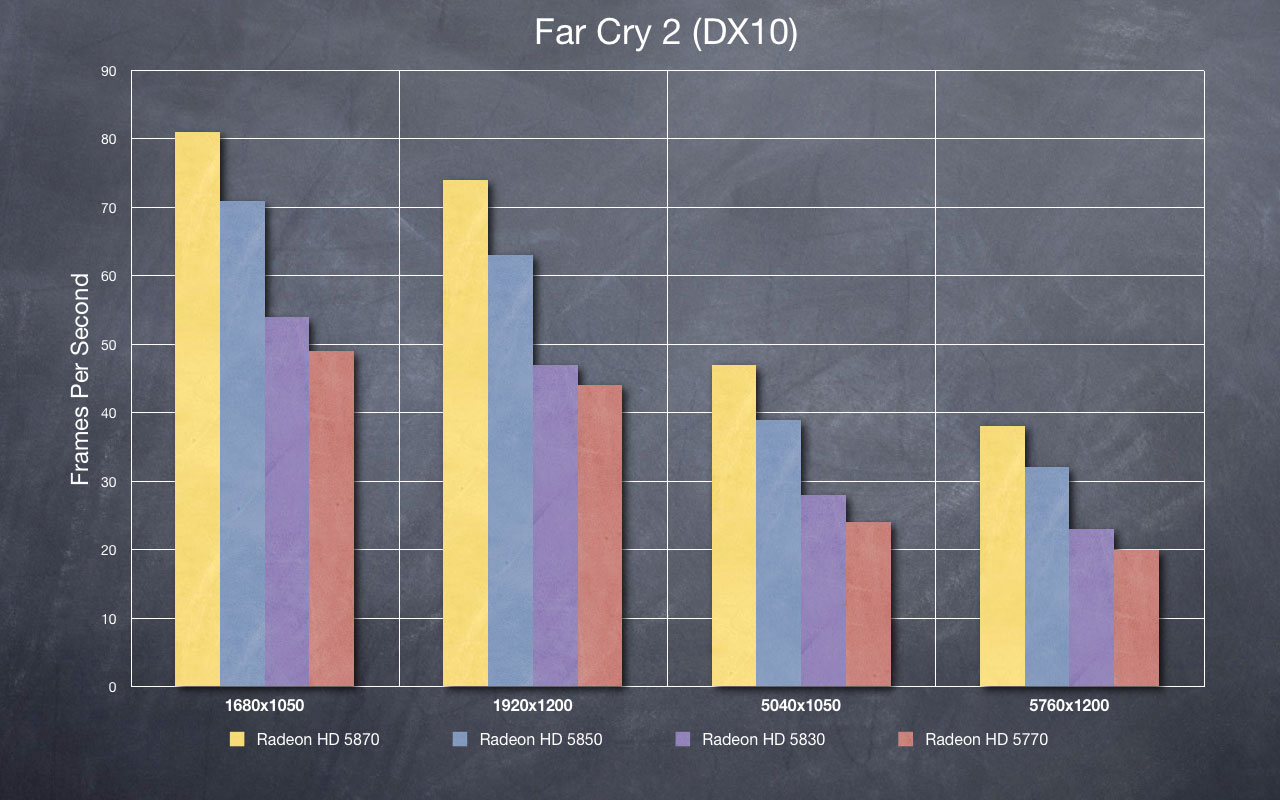ATI Radeon 5850 & 5830 Review - Far Cry 2
Far Cry 2 (and the whole Cry/Crysis series) has long been considered a system killer. If not a killer, then at least a good strong test. As always, we run our test at max settings with 4xAA. The benchmark tool within Far Cry 2 offers settings for High, Very High and Ultra. We chose Ultra with 4xAA. Like we saw with our previous tests of the GTX275, additional VRAM will provide a smoother gameplay experience. While the overall average fps changes very little, there are far more "stops" and "stutters" in the gameplay with a 2GB framebuffer.
As quality and AA increases, the need for a larger framebuffer also increases (there is more data to hold in the VRAM). The Far Cry 2 benchmark tool is unique in that it offers a realtime graph of the fps count, and allows us to see the reduction in these stutters (as evidenced by the reduction in momentary dips in fps). With the increased framebuffer the game is having to swap textures and other graphic information from the HDD to the video memory on fewer occasions, offering a smoother experience.
Now that ATI's partners are offering the HD 5850 with 2GB of VRAM, the "smoothness" impact should be taken into account. In the second graph below, we show the difference with the original 1GB HD 5870 and the 2GB from the HD 5870 Eyefinity6 card.
In our first three benchmarks we saw a linear performance curve between the four cards. Dirt 2 is the first game where the results break this trend. Rather than create clean even "steps" in the performance graph, there is a large gap in performance between the 5850 and the 5830. The 5830 posts numbers quite similar to the 5770, and the reduction in Unified Shaders begins to show a real performance impact.
Hitting 60fps
In Far Cry 2, 56fps can be attained with 0xAA/High. Scores pushed past 60fps by dropping the resolution to 4800x900.

